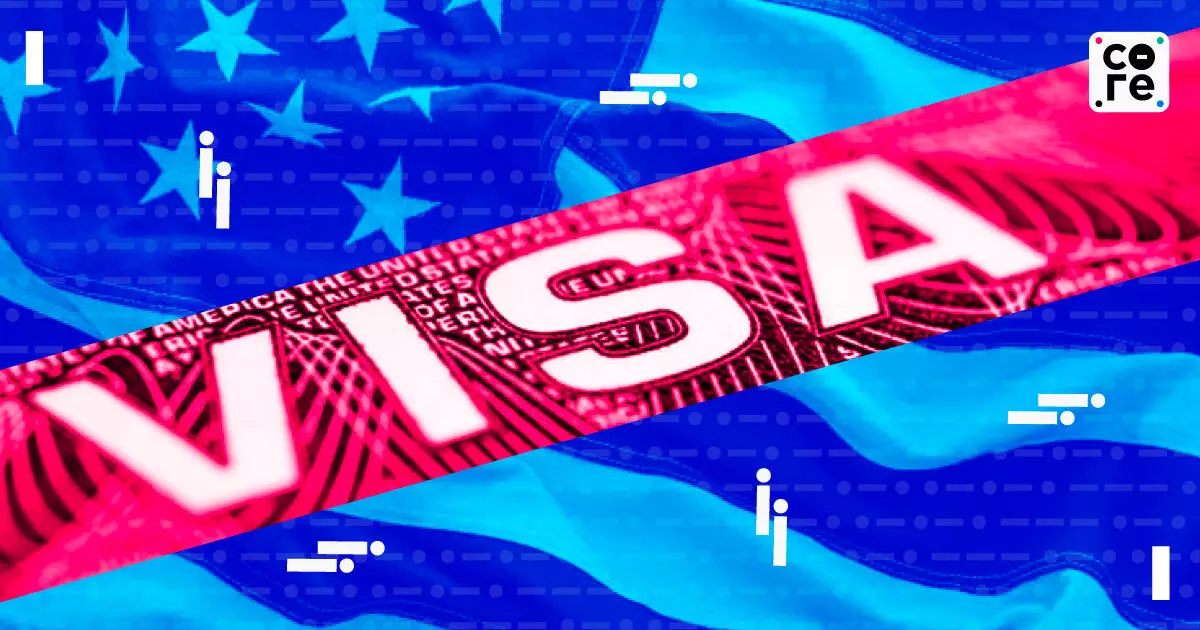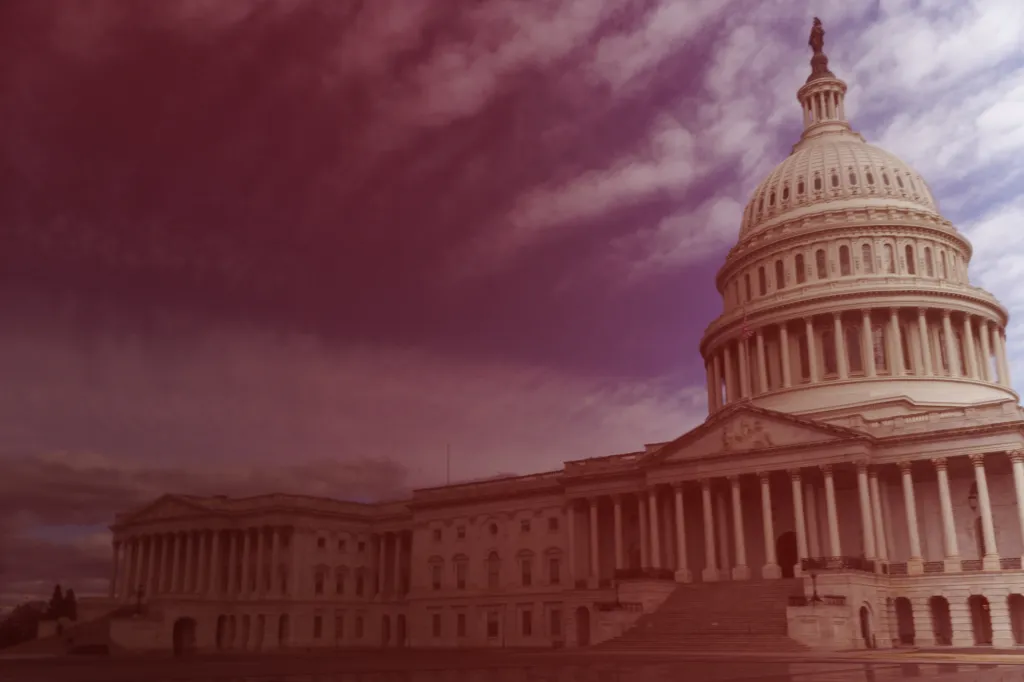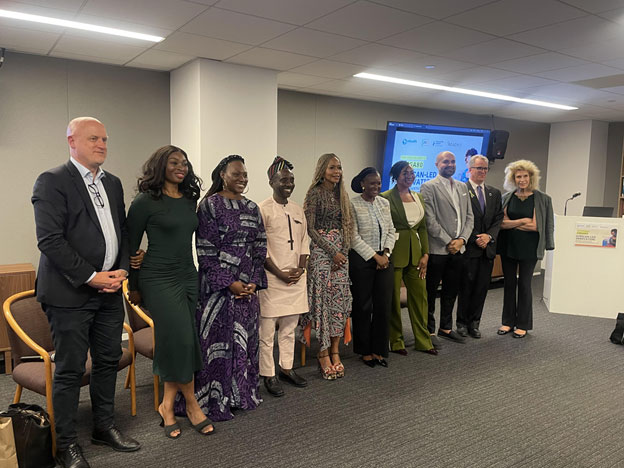
The One Big Beautiful Bill Act, signed into law in July, has wide-reaching implications for taxpayers. From an enlarged standard deduction for older adults to more-generous tax credits for families with young children, the legislation contains a plethora of provisions that could lower your 2025 tax bill — or, in some cases, increase it.
Just as noteworthy as the new rules are those that extend provisions from the 2017 Tax Cuts and Jobs Act (TCJA). The OBBBA makes permanent the reductions in federal income tax rates that the TCJA implemented. (Otherwise, those tax rates would have expired on December 31.)
In addition, the OBBBA increases the federal estate tax exemption from $13.99 million per person in 2025 to $15 million per person, or $30 million for a married couple, in 2026. It will be adjusted annually for inflation.
Without congressional action, the exemption would have dropped to about $7 million after 2025. Because of the exemption’s size, the vast majority of taxpayers don’t need to worry about paying federal estate taxes.
You may want to schedule an appointment with your financial planner or tax preparer to discuss how the bill will affect your 2025 tax liability.
“You’ve got to run the numbers, because there’s so much that’s changing,” says Tim Steffen, director of advanced planning at Baird.
To get you started, we have guidance here on how to get the most from some of the significant provisions in the OBBBA.
A BONUS DEDUCTION FOR OLDER ADULTS
Starting with the 2025 tax year, taxpayers who are 65 or older will be eligible for an additional standard deduction of $6,000. The bonus deduction, which is scheduled to expire at the end of 2028, comes on top of an existing increase in the standard deduction of $2,000 for single filers who are 65 or older or, for married couples who file jointly, $1,600 for each spouse who is 65 or older.
The expanded deduction means a single taxpayer who is 65 or older will be able to deduct up to $23,750 from taxable income, while a married couple who file jointly will qualify for a deduction of up to $46,700, assuming both are 65 or older.
That can translate to significant savings for older taxpayers. For example, an older married couple in the 22% tax bracket (for 2025, that includes income of $96,951 to $206,700) could see tax savings of $2,640 a year, says Marilou Davido, a certified financial planner in Milwaukee.
Older taxpayers in lower tax brackets could save $600 to $1,200 a year, she says.
The legislation won’t eliminate taxes on Social Security benefits. But because the taxability of benefits is based on a calculation involving your adjusted gross income, the OBBBA will reduce the number of beneficiaries who pay the taxes from 36% to 12%, according to the White House Council of Economic Advisers.
Now for the caveats: The bonus standard deduction will affect only eligible taxpayers whose income exceeds the amount of the deduction, so low-income people won’t benefit from this tax break.
At the other end of the spectrum, higher-income taxpayers could see the amount of the bonus deduction reduced or eliminated altogether.
The deduction starts to phase out for couples with modified adjusted gross income of more than $150,000 ($75,000 for single filers) and is fully phased out at MAGI of $250,000 ($175,000 for singles). Your modified adjusted gross income is your adjusted gross income with certain deductions added back.
The higher standard deduction won’t shield Medicare beneficiaries who pay a surcharge, known as the income-related monthly adjustment amount (IRMAA), on their Part B and Part D premiums. The surcharge is based on a version of your MAGI that’s specific to Medicare and is calculated before the standard deduction applies.
Taxpayers whose MAGI is close to surpassing the eligibility threshold for the bonus standard deduction should consider avoiding moves that could reduce this tax break’s value.
For example, converting funds in a traditional IRA to a Roth IRA could reduce or eliminate the bonus deduction by increasing your MAGI, says Davido.
If you want to convert to a Roth, consider spreading out the conversions over several years to keep your MAGI below the threshold, she says.
One argument in favor of doing a Roth conversion is that it protects your nest egg from future tax increases, because Roth withdrawals are tax-free as long as you’re 59½ or older and have owned the Roth for at least five years.
But now that the OBBBA has extended current tax rates, individuals can spread out conversions without fear of a tax increase, at least under the current presidential administration, Davido says.
Timing matters, too: Converting to a Roth before age 65 would avoid the potential loss of the bonus deduction.
Capital gains distributions and withdrawals from traditional IRAs will also increase your MAGI. But there are steps you can take to offset that income and preserve the bonus deduction.
If you’re still working, increasing pretax contributions to 401(k) plans and health savings accounts (HSAs), for example, will reduce your MAGI.
Individuals who are 70½ or older can reduce their MAGI by making qualified charitable distributions from their IRAs, says Todd Calamita, a CFP in Charlotte, N.C.
In 2025, taxpayers can make QCDs of up to $108,000 from their IRAs to qualifying charities. If you’re 73 or older, a QCD will also count toward your required minimum distribution (RMD). A QCD isn’t deductible, but it’s excluded from taxable income.
Davido recommends working with your tax preparer or financial planner before year-end to adjust income-tax withholding and estimated tax payments for 2026. The bonus standard deduction could enable you to reduce the amount of tax withheld from your Social Security benefits and IRA withdrawals; you may also be able to lower your quarterly estimated tax payments.
A BIGGER BREAK FOR HOMEOWNERS
The OBBBA contains a valuable tax break for homeowners who live in high-tax states, and like the bonus standard deduction, the change could affect your 2025 tax bill.
Starting in 2025, those who itemize will be able to deduct up to $40,000 in state and local taxes (SALT), up from a cap of $10,000. The cap will increase by one percentage point each year through 2029, then return to $10,000 in 2030.
The SALT deduction includes state income, property and sales taxes; it’s often most useful for property taxes, which have soared as home values have risen in recent years. The primary beneficiaries will be homeowners in states with high property taxes, such as New Jersey and New York.
The cap is gradually reduced for those with MAGI above $500,000 ($250,000 for a married individual filing separately), and taxpayers with MAGI of $600,000 or more will be limited to deducting $10,000 on their tax returns.
Consequently, homeowners who are eligible for the higher cap need to be even more mindful of their 2025 MAGI, says Robert Keebler, a CFP with Keebler and Associates in Green Bay, Wis. This phaseout is potentially more costly than the phaseout for the bonus standard deduction, he says.
Keebler offers this example: Suppose you’re married, file jointly and have a MAGI of $500,000. Your itemized deductions include $40,000 in state and local taxes. If you convert $100,000 from a traditional IRA or 401(k) to a Roth, your gross income rises to $600,000, and your state and local tax deduction is reduced to $10,000. While your gross income went up by $100,000, your taxable income rose by $130,000.
At a 35% marginal rate, your effective rate on the conversion is 45.5%.
As is the case with older taxpayers, homeowners who are eligible for the higher SALT cap should consider spreading out Roth conversions and taking other steps to keep their MAGI below the thresholds.
Homeowners in high-tax states may get even more out of the higher cap by bunching their itemized deductions.
For example, if you paid your 2025 property taxes earlier this year and receive a bill for 2026 in December, pay it before December 31 so you can deduct both payments on your 2025 tax return, Davido says.
Using the bunching strategy, you would claim the standard deduction in 2026 and make two property tax payments in 2027 so you can itemize in that year.
Bunching your charitable contributions is also an effective way to increase your itemized deductions and lower your tax bill.
A donor-advised fund is a useful tool for this strategy. These funds, offered by major financial institutions, allow you to make a large contribution, deduct the donation on the current year’s tax return, and decide later which charities you want to support.
However, there are other provisions in OBBBA that could reduce the effectiveness of this strategy, which we’ll discuss below.
NEW STRATEGIES FOR CHARITABLE CONTRIBUTIONS
As you consider your year-end charitable contributions, it’s important to understand new tax breaks for givers — along with new limits on how much some donors will be allowed to deduct.
Starting in 2026, taxpayers who don’t itemize can deduct up to $1,000 in charitable contributions, or up to $2,000 for married couples who file jointly. Donations to donor-advised funds and private foundations aren’t eligible for this new deduction.
If you don’t itemize and want to take advantage of this tax break, consider making the charitable contributions you’d ordinarily make by the end of this year in January 2026 instead.
Meanwhile, taxpayers who itemize on their tax returns and deduct charitable contributions will be subject to a new limit on the amount they can deduct. The maximum amount of cash gifts donors can deduct will remain at 60% of AGI.
However, starting in 2026, the deduction will be limited to the amount of charitable contributions that exceed 0.5% of adjusted gross income, Steffen says.
For example, a married couple with AGI of $100,000 who donate $700 to charity will be permitted to deduct only $200.
To avoid that new floor, itemizers may want to make their 2026 contributions in 2025, keeping in mind how that will affect other aspects of their tax bill.
Taxpayers in the top tax bracket (for 2025, that includes income higher than $626,350 for singles or $751,600 for joint filers) may also want to accelerate charitable contributions into 2025 because of a cap on all itemized deductions those taxpayers can claim.
Starting in 2026, the amount of itemized deductions taxpayers in the 37% tax bracket can claim will be limited to 35% of their taxable income.
MORE BENEFITS FOR HEALTH SAVINGS ACCOUNTS
A health savings account can be a valuable tool to set aside money for both current and future health care expenses. An HSA provides a triple tax break: Your contributions are tax-deductible (or pretax if made through your employer), the money grows tax-deferred, and you can use it tax-free for eligible medical expenses in any year.
After you turn 65, you can also withdraw money tax-free from the HSA for Medicare premiums, in addition to other out-of-pocket health care costs.
The new law has three HSA-related provisions. Starting on January 1, 2026, you can withdraw up to $150 per month ($300 for couples) from an HSA tax-free to pay monthly or annual fees for direct primary care arrangements (also known as concierge medicine), in which doctors provide services in exchange for a membership fee.
The law also clarifies that enrolling in a direct primary care arrangement does not disqualify someone from being able to contribute to an HSA if they also have an eligible high-deductible health policy.
Not all concierge practices qualify under the new law as direct primary care arrangements — there are limits to the types of services they can provide beyond primary care.
Additionally, the law permanently exempts telehealth services from the HSA-qualified plan deductible. Most medical care, except for some preventive care, must be subject to the deductible for a health insurance policy to be HSA-qualified.
During the COVID pandemic, you could receive some telehealth services without first paying the plan’s deductible — typically with a $5 or $10 co-payment — but that rule expired at the end of 2024. The OBBBA permanently exempts telehealth from the deductible requirements, retroactive to January 1, 2025.
Finally, bronze plans and catastrophic plans sold on the Affordable Care Act insurance marketplace will automatically be HSA-qualified, starting with the 2026 plan year.
Using an HSA-eligible bronze plan and making tax-free withdrawals from your HSA to pay for direct primary care could be a win-win, says Roy Ramthun, founder and president of HSA Consulting Services LLC in Silver Spring, Md.
You can sign up for direct primary care for your regular doctor’s visits but have a high-deductible bronze plan as a backstop if you end up needing expensive medical care. You’ll be eligible to contribute to an HSA, and you can also use HSA money tax-free to pay the monthly direct primary care fees.
Notably, the version of the OBBBA that originally passed the House of Representatives would have allowed people who sign up for Medicare Part A to contribute to an HSA. But that provision wasn’t included in the final law, so the current rules still stand: You can make HSA contributions only if you haven’t enrolled in either Medicare Part A or Part B.
If you or your spouse is still working and you have health insurance from an employer with 20 or more employees, you can delay signing up for Part A and Part B. But you must enroll within eight months of losing that coverage; otherwise, you could face a lifetime late-enrollment penalty for Part B.
If you sign up for Part A after you turn 65, that coverage takes effect up to six months retroactively. Keep that time frame in mind when calculating your HSA contribution.
CHANGES TO THE HEALTH INSURANCE MARKETPLACE
Several administrative changes are coming to Affordable Care Act marketplace coverage because of provisions in the OBBBA, as well as new rules from the Centers for Medicare & Medicaid Services.
The open-enrollment period to sign up for a marketplace plan will be shorter. Next year, open enrollment for the federal marketplace (HealthCare.gov) will run from November 1, 2026, to December 15, 2026. States that operate their own marketplaces won’t be allowed to extend open enrollment past December 31. Currently, open enrollment goes to January 15, and even longer in some states.
Before you enroll in a marketplace plan, you’ll need to provide evidence of income eligibility for tax credits for your premiums. (Currently, you have 90 days after you enroll to submit the information.)
If your income increases after you enroll and you don’t update your information with the marketplace, you may have to pay back the extra subsidy when you file your income tax return.
Under the previous rules, there were limits to how much you have to pay back if you underestimate your income.
Enhanced subsidies are scheduled to expire
Perhaps the most consequential outcome for ACA plan enrollees is that the OBBBA didn’t extend enhanced premium subsidies for marketplace coverage. The enhanced subsidies are set to expire at the end of 2025, and Congress probably won’t pass additional legislation to extend them.
So the size of the subsidies and the income levels to qualify are likely to shrink significantly on January 1, 2026. People who earn more than 400% of the federal poverty level will no longer be eligible for any subsidies after 2025. For 2026 marketplace plans, 400% of the poverty level is $62,600 for singles and $84,600 for couples.
If you have individual health insurance from the ACA marketplace and you plan to do Roth conversions, you may want to convert more money before the end of 2025 than in 2026, when the extra income may make you ineligible for the subsidy.
“For a retired client, we’ve been able to do about $100,000 of Roth conversions yearly with the enhanced premium tax credits,” says Mark Whitaker, a CFP and founder of Retirement Advice LLC, a fee-only financial planning firm in Provo, Utah.
“Going forward, to hit their ACA subsidy levels, they will only be able to do about $60,000 of Roth conversions a year.”
But be sure to consider other variables, too, such as your tax rate and other income cut-offs. (For more, see the section above on the bonus deduction for older people.)
If you have kids at home, you may benefit from multiple provisions in the OBBBA.
More-generous tax credits for parents
The OBBBA permanently extends the child tax credit and increases it to $2,200 per child, up from $2,000. The credit phases out for singles with modified adjusted gross income of $200,000 or more and married couples who file jointly with MAGI of $400,000 or more.
The OBBBA also makes permanent a separate credit of up to $500 for families with other dependents, such as parents or adult relatives.
The adoption tax credit is more valuable, too. If you adopted a child this year, you can claim a credit for up to $17,280 in eligible expenses. Here’s what’s new: $5,000 of the tax credit will be refundable.
In other words, taxpayers with tax liability of less than $5,000 can still claim that portion of the credit, which means some of that amount could be returned to parents as a refund.
Starting in 2026, the maximum tax credit parents can claim for child and dependent care expenses, such as the cost of day care or a nanny, will increase to 50% of as much as $3,000 in expenses for one dependent and 50% of as much as $6,000 for two or more dependents (both up from 35%).
The credit decreases based on adjusted gross income to as little as 20% of expenses, but OBBBA increased the income thresholds. For married couples with AGI between $150,000 and $210,000, the credit ranges from 35% to 20%. Couples with AGI of $210,000 or more are eligible for a credit of 20% of expenses.
Expanded uses for 529s
Originally designed as a tax-advantaged way to save for college, 529 plans have been expanded over the past several years to permit tax-free withdrawals for certain non-college expenses, too. The OBBBA extends these uses even further.
“The new rules allow up to $20,000 per year to be used for elementary and secondary school tuition, course materials, tutoring, fees for standardized tests, and more,” says Robert Farrington, founder of the website The College Investor.
Previously, tax-free withdrawals of 529 money for K-12 students were limited to tuition, up to $10,000 annually.
The legislation also permits tax-free 529 withdrawals for certain other expenses, such as non-degree credential programs for plumbing, electrical, HVAC and some other trades; certification and licensing expenses; and continuing education required to maintain those licenses.
That means beneficiaries who don’t go to college will have additional ways to benefit from tax-advantaged 529s.
The law permanently allows rollovers from 529 plans to ABLE accounts, where the money can continue to grow tax-deferred for people with disabilities who may not go to college.
Most of the changes related to 529 distributions took effect as soon as the law was signed on July 4, although the increased, $20,000 annual limit for K-12 expenses doesn’t apply until the 2026 tax year.
Keep in mind that not all states have altered their rules to follow the federal expansion. “For example, California doesn’t allow 529 plans to be used for elementary or secondary school expenses,” says Farrington.
Trump accounts for kids
The OBBBA introduces a new investment account — known as a Trump account — for kids younger than 18, and the government will seed the account with $1,000 for children born between January 1, 2025, and December 31, 2028.
Parents and others can contribute up to $5,000 a year to the account until the child turns 18. Contributions are invested in a fund that tracks a broad U.S. stock index, and they grow tax-deferred.
You may have better options for your child’s long-term savings. Annual contributions are not tax-deductible, and earnings are taxed at the beneficiary’s income tax rates when withdrawn.
Unless the money is used for certain expenses, such as education or up to $10,000 for a first-time home purchase, you’ll have to pay a 10% early-withdrawal penalty before age 59½.
“The only advantage of Trump accounts is the $1,000 birthday gift for newborn children. Families should, of course, accept the free money,” says Mark Kantrowitz, a college-savings expert and author of How to Appeal for More Financial Aid.
But for your child’s future college expenses, you’re better off contributing to a 529 plan, because withdrawals for qualified educational expenses are tax-free.
LAST CHANCE TO CLAIM TAX CREDITS FOR THESE ENERGY-SAVING MOVES
The OBBBA speeds up the deadlines to take advantage of certain tax credits related to saving energy.
The Energy Efficient Home Improvement Credit, which provides a 30% tax credit toward the cost of energy-efficient windows, home energy audits, heat pumps and other energy-saving home improvements, was previously scheduled to phase out in 2033. (The law imposed annual limits for certain projects, such as $600 for exterior windows and skylights.)
But now, the credit expires at the end of 2025. The Residential Clean Energy Credit, which provides a tax credit of up to 30% for more-ambitious projects, such as solar electric panels and solar water heaters, will also expire on December 31. The equipment must be installed and operational by year-end to qualify for the credit.
Additionally, the $7,500 tax credit to buy or lease qualified electric vehicles, along with the $4,000 credit for eligible used EVs, ends September 30, 2025.
At the same time, however, the OBBBA provides a new tax break for car buyers: a deduction of up to $10,000 in interest on loans for cars purchased between 2025 and 2028.
You don’t have to itemize to claim this deduction, but it’s available only for loans taken out to buy new cars assembled in the U.S., which rules out many popular models. The deduction phases out for individuals earning more than $100,000 or married couples making more than $200,000.
Note: This item first appeared in Kiplinger Personal Finance Magazine, a monthly, trustworthy source of advice and guidance. Subscribe to help you make more money and keep more of the money you make here.



